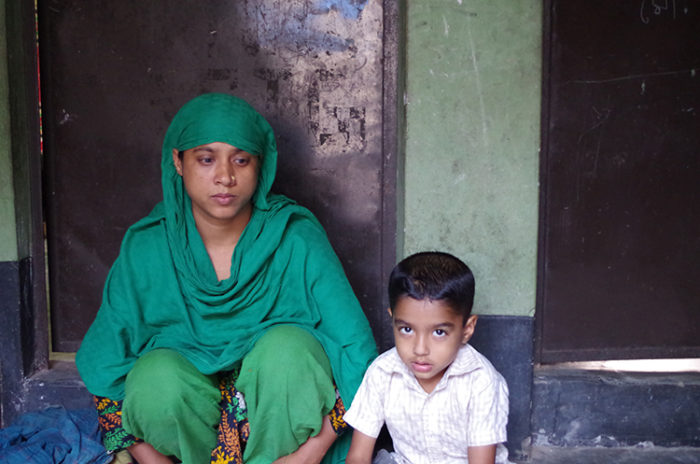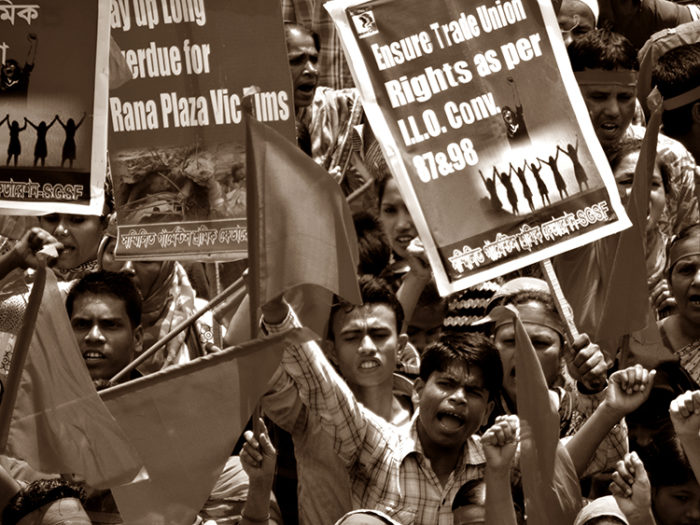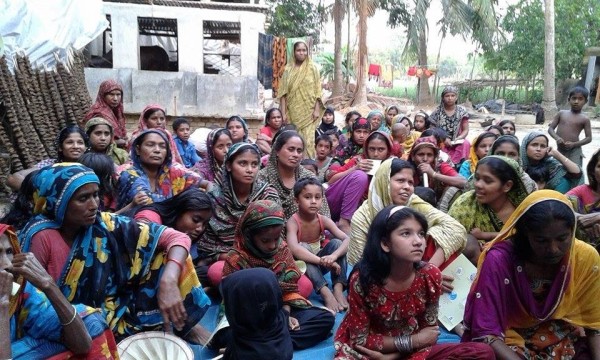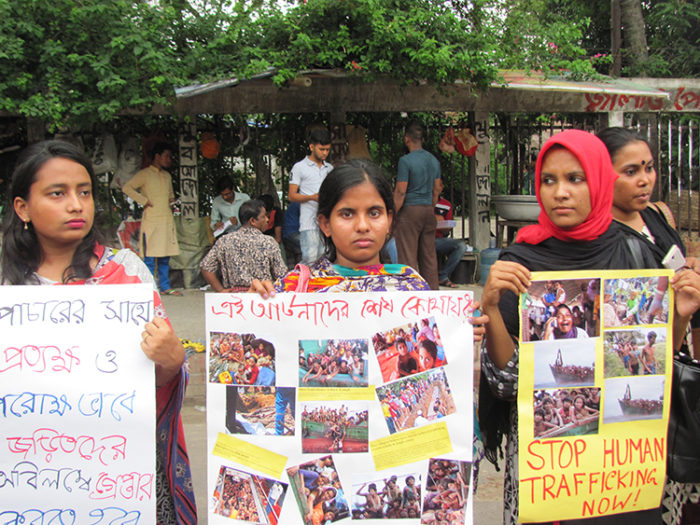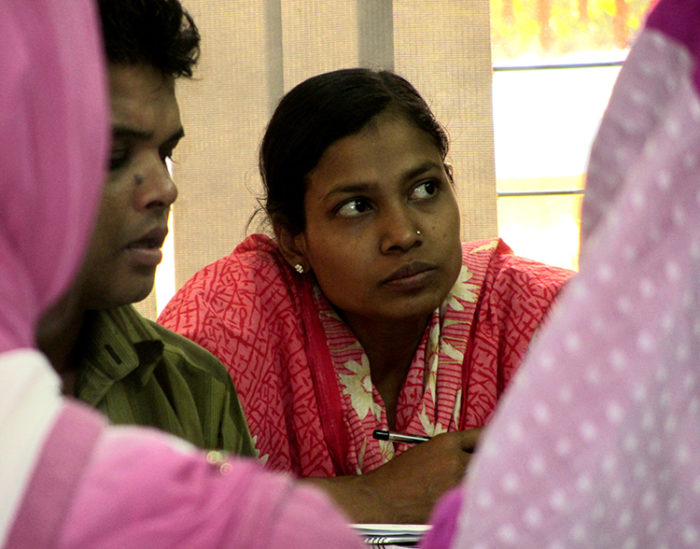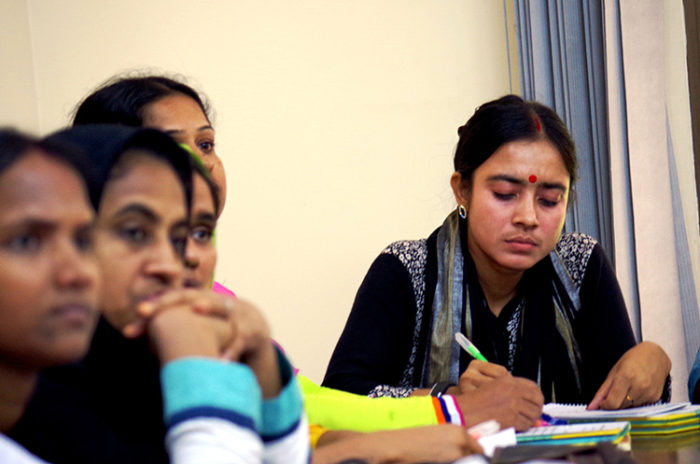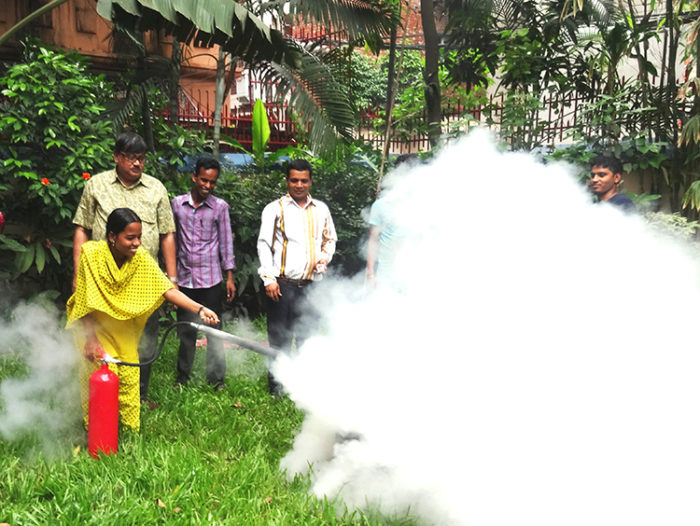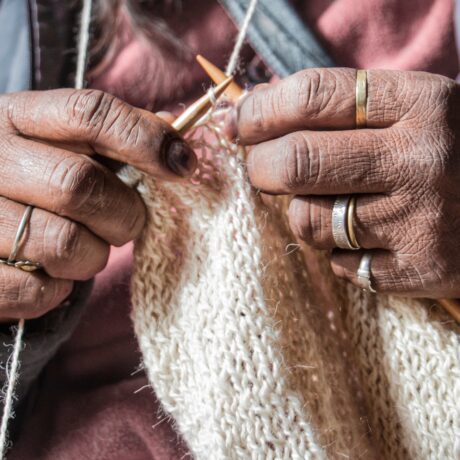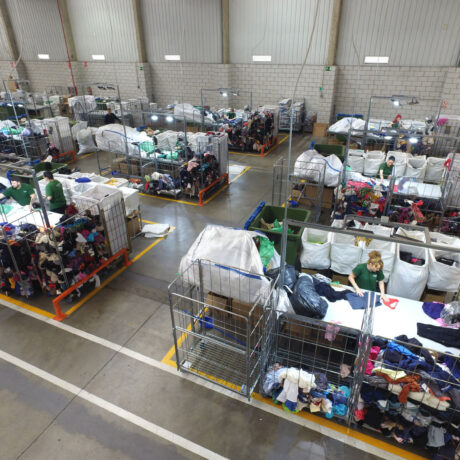Photo Essay: Giving Voice to Hope in Bangladesh
The three-year anniversary of the November 24, 2012, fire that killed 112 Bangladesh garment workers at the Tazreen Fashions Ltd., factory offers a time to reflect on garment workers’ ongoing struggle for workplaces where they will not be killed or injured and for jobs that will support their families.
The Tazreen fire was preventable, as was the collapse of the multistory Rana Plaza factory five months later in which more than 1,130 garments workers died and thousands more were severely injured.
Workers at Tazreen and Rana Plaza did not have a union or other organization to represent them and help them fight for a safe workplace. Without a union, garment workers say they are harassed and even fired when they raise safety issues with their employer. They are not trained in basic fire safety measures and often their factories, like Tazreen, have locked emergency doors and stairwells packed with flammable material.
Despite the many obstacles to forming organizations and achieving a voice at work, garment workers are at the forefront of pushing for change at their factories. With our strong and long-term grassroots connections in Bangladesh, the Solidarity Center allies with garment workers to provide ongoing training for factory-level union leaders on topics such as gender equality, workers’ legal rights and fire safety.
This photo essay gives voice to the sorrow, but also the hope, of the 4 million workers who toil in Bangladesh garment factories.
1. Bangladesh’s 4 million garment workers, mostly women, toil in 5,000 factories across the country, making the $25 billion garment industry the world’s second largest, after China. Yet many risk their lives to make a living. In the three years since the fatal Tazreen Fashions Ltd. factory fire, some 31 workers have died and at least 935 people have been injured in garment factory fire incidents in Bangladesh. Credit: Law at the Margins
2. Some 112 garment workers were killed in a blaze that swept through the Tazreen factory on November 24, 2012. Hundreds more were injured and like Tahera (above), will never be able to work again. Survivors say they endure daily physical and emotional pain, and often cannot support their families because they cannot work and have received little or no compensation. Solidarity Center/Mushfique Wadud
3. Tens of thousands of Bangladesh garment workers held rallies on May Day this year to highlight the need for the freedom to form worker organizations to ensure safe and healthy workplaces. Credit: Solidarity Center/Balmi Chisim
4. With few jobs available that pay a living wage, more than 600,000 Bangladeshi workers migrate each year. Yet, “after two years, after three years, they are not getting their salary,” says Sumaiya Islam, director of the Bangladesh Migrant Women’s Organization (BOMSA). “After spending $1,000 (to labor recruiters), they are not getting paid.” Credit: Shahjadi Zaman
5. Migrants from Bangladesh also risk their lives when going overseas for jobs. In June, Bangladesh families rallied to demand the government punish traffickers after many Bangladesh workers were among migrants stranded on abandoned boats by unscrupulous labor traffickers. “I did not get anything to eat for 22 days and just survived by eating tree leaves,” Abdur said, describing his journey to Malaysia. Credit: Solidarity Center/Mushfique Wadud
6. On April 24, 2013, the multistory Rana Plaza factory collapsed, a preventable tragedy that killed more than 1,100 garment workers and injured thousands more. On the two year anniversary in April, family members and friends gathered at the site of the building to commemorate their loss. Credit: Solidarity Center/Balmi Chisim
7. Thousands of garment workers, like Mosammat Mukti Khatun (above, looking at the Rana Plaza rubble) who survived the Rana Plaza disaster, remain too injured or ill to work and support their families. Survivors and the families of those who lost loved ones in the collapse say they are struggling to make ends meet, unable to pay rent, send their children to school or provide for other basic needs. Solidarity Center/Balmi Chisim
8. Days before tens of thousands of Bangladesh garment workers rallied on the two-year anniversary of the Rana Plaza collapse, the ITUC released a report that found “a severe climate of anti-union violence and impunity prevails in Bangladesh’s garment industry. The violence is frequently directed by factory management. The government of Bangladesh has made no serious effort to bring anyone involved to account for these crimes.” Solidarity Center/Balmi Chisim
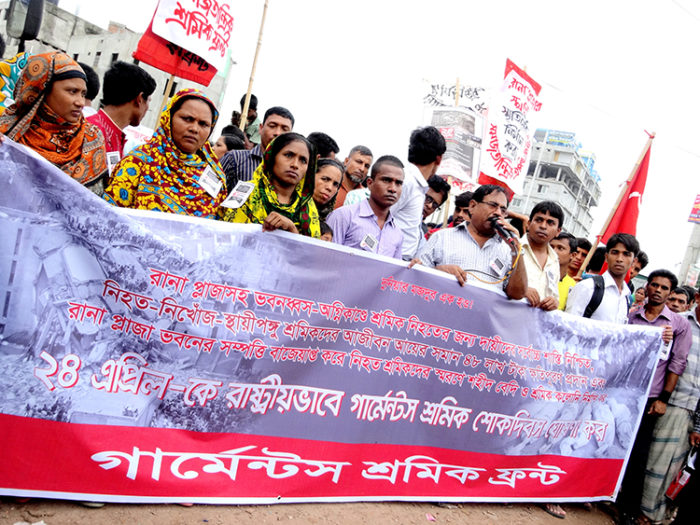
9. The Solidarity Center launched the Bangladesh Worker Rights Defense Fund in April 2014, following an increase in violence and harassment against workers who were seeking to form unions to protect their health and rights on the job. Donations of more than $15,500 helped to provide costly medical treatment for organizers beaten or attacked while speaking to workers about their rights, and temporary food and shelter for workers fired for trying to improve their workplace. Credit: Solidarity Center/Shawna Bader-Blau
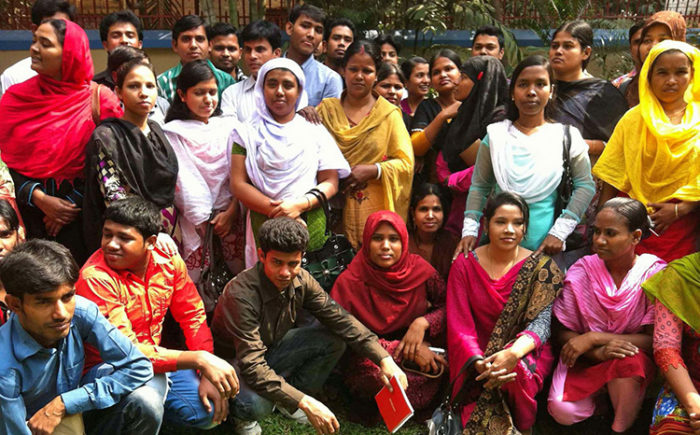
10. Despite employer and government resistance to workers’ efforts to form organizations to improve job safety, in the Dhaka export processing zone alone, 40 of the 103 factories include workers’ welfare associations, which are similar to unions. Credit: Solidarity Center/Mushfique Wadud
11. Women garment workers primarily fuel Bangladesh’s $25 billion a year garment industry, yet women are “still viewed as basically cheap labor,” says Lily Gomes, Solidarity Center senior program officer for Bangladesh. “There is a strong need for functioning factory-level unions led by women,” says Gomes, who is leading efforts to help empower women workers to take on leadership roles at factories and in unions throughout Bangladesh. Credit: Solidarity Center/Kate Conradt
12. With strong and long-term grassroots connections in Bangladesh, the Solidarity Center provides ongoing training for garment worker union leaders on topics such as gender equality, workers’ legal rights and job safety. Credit: Solidarity Center/Balmi Chisim
13. Garment worker union leaders sharpen their skills through regular Solidarity Center workshops, such as this one on financial management. Credit: Solidarity Center/Balmi Chisim
14. Hundreds of garment worker union leaders have participated in this year in the Solidarity Center’s 10-week fire safety certification course. “People who worked at Tazreen and Rana Plaza had no training and had no union,” says Saiful, who took part in a recent fire training. “This training is about making sure those things never happen again.” Credit: Solidarity Center/Rakibul Hasan





